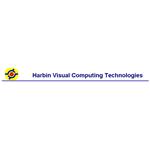Harbin Visual Computing Technologies

Harbin Visual Computing Technologies (HVCT) is a small business
with expertise in image processing/analysis, machine vision,
pattern recognition, and 3D visualization. We focus on the
development of core techniques of visual computing, and market
our products throught Original Equipment Manufacturers (OEMs)
and Value Added Resellers (VARs) who rely on us to develop some
of the most sophisticated visual computing solutions on the
market. This includes
* Next-generation human-computer interface
* Moving target detection, tracking, and recognition
* 3D visualization and medical imaging
* Image processing/analysis and computer vision
* Machine learning and data mining
HVCT's mission is to provide state of the art visual
information
processing, analysis, and visualization software products and
solutions. This includes
* Developing turn-key, end user software products
* Licensing our in-house libraries (SDK)
* Porting and customizing open-source libraries
* Providing professional consulting services
Company Details
Year Established:
2004
Total Sales ($CDN):
$1 - $100,000
Number of Employees:
2
Company Information
Linda Xie
Title:
Admin/Exec Assistant
Area of Responsibility:
Administrative Services
Telephone:
(905) 522-6972
Email:
Click Here
Products
Head-controlled, Voice-commanded Mouse (vmouse)
Image Processing And Analysis Library (ipal)
IPAL is a well-organized, field-proven collection of C++
classes. What makes IPAL stand out among similar products on
the market is its high performance and reliability plus our
proprietary algorithms (robust, noise-resistant image
registration, fastest Euclidean Distance Transform and
skeletonization, just to name a few)
Pattern Recognition Library (prl)
PRL encapsulates commonly-used pattern recognition
methodologies into a C++ library. It is used for constructing
applications such as face recognition, fingerprint recognition,
OCR, and one-dimensional signal recognition (like speech
recognition, spectral recognition), etc.
Machine Vision Toolkit (mvtk)
MVTK consists of computer vision algorithms, from low-level to
high level, such as camera calibration, fundamental matrix
estimation, 3D reconstruction, motion analysis, etc.
Tracker Package (tracker)
HTracker is a small yet powperful package used for tracking
moving object of any shape or size in unconstrained
environment. It has boosttrap mechanism which lets itself
recovered when losing track of a moving object.
Machine Learning Library (mll)
Machine learning is the exciting field of AI. MLL collects a
few training based learning mechanisms, such as various neural
networks, genetic algorithm, boosting technique, and support
vector machine, etc. These are very powerful tools, but need to
be tuned up and altered to solve specific problems.
Face Detection Package (facefinder)
This package is used for detecting faces in static images. It
is proven to be the best face detection with both low FPR and
FNR. Currently it is designed to detect only frontal faces.
Interactive Volume Visualization System (vinsight)
VInsight is an interactive system for volume visualization that
allows researchers and engineers to quickly explore complex 3D
volume data from eighter scanners (CT, MRI, US) or numeric
simulations. VInsight provides a range of visualization tools
which can be accessed through user-friendly GUI. The
significant features of VInsight are
(1) 3D texture mapping based volume rendering (fastest volume
rendering method)
(2) Iso-surfacing
(3) Re-slicing
(4) Multiple display layouts
(5) Image segmentation and registration
(6) Various data analysis and measurement tools
Micro-organism Identification System (vident)
VIdent is a fully automatic micro-organisms identification
system. It uses IR spectra of unknown sample to identify
various bacteria. The system can be adapted to perform other
tasks, for example, identifying particular disease using
patient's urine or blood samples.
Services